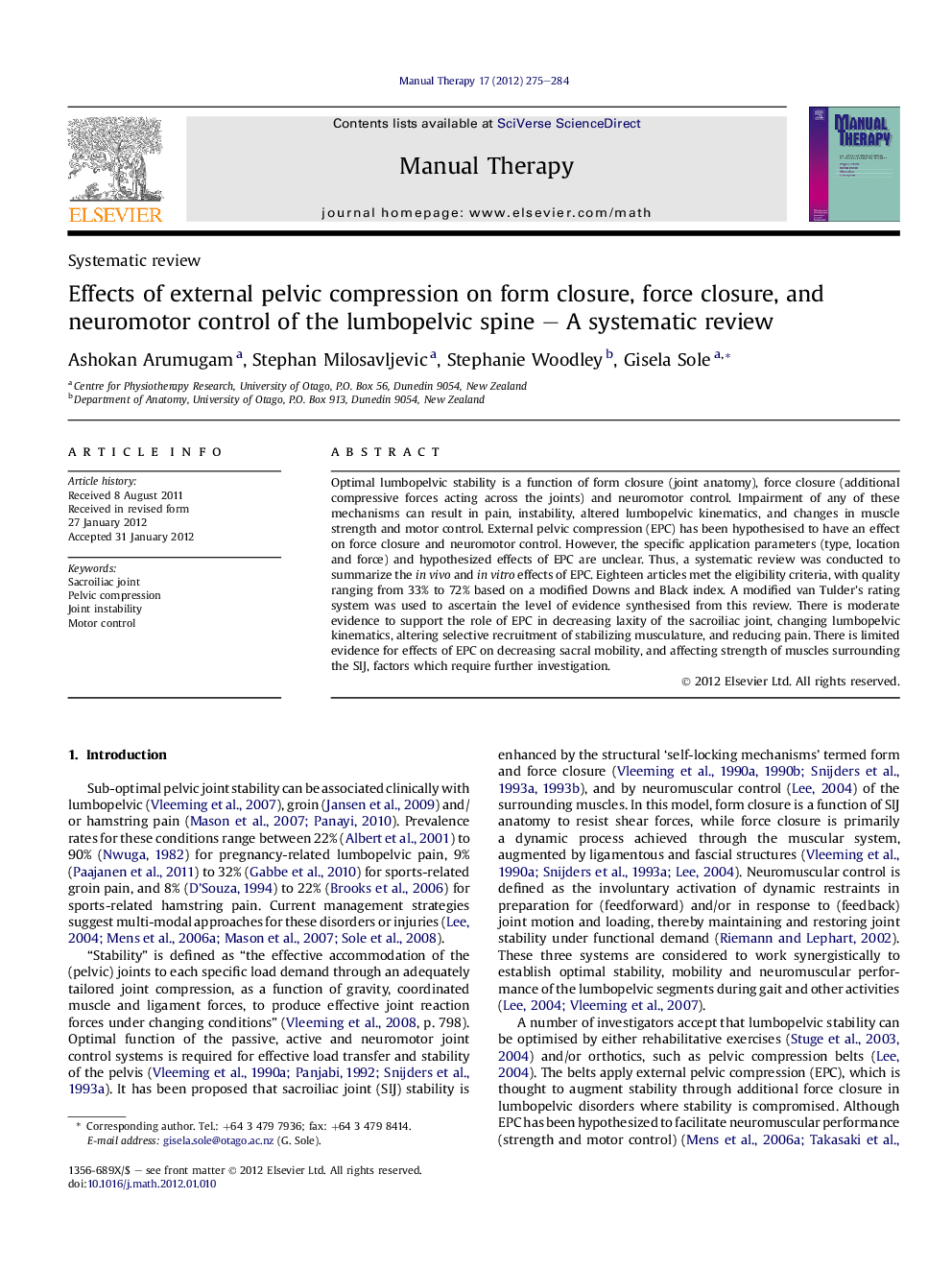| Article ID | Journal | Published Year | Pages | File Type |
|---|---|---|---|---|
| 2625363 | Manual Therapy | 2012 | 10 Pages |
Optimal lumbopelvic stability is a function of form closure (joint anatomy), force closure (additional compressive forces acting across the joints) and neuromotor control. Impairment of any of these mechanisms can result in pain, instability, altered lumbopelvic kinematics, and changes in muscle strength and motor control. External pelvic compression (EPC) has been hypothesised to have an effect on force closure and neuromotor control. However, the specific application parameters (type, location and force) and hypothesized effects of EPC are unclear. Thus, a systematic review was conducted to summarize the in vivo and in vitro effects of EPC. Eighteen articles met the eligibility criteria, with quality ranging from 33% to 72% based on a modified Downs and Black index. A modified van Tulder’s rating system was used to ascertain the level of evidence synthesised from this review. There is moderate evidence to support the role of EPC in decreasing laxity of the sacroiliac joint, changing lumbopelvic kinematics, altering selective recruitment of stabilizing musculature, and reducing pain. There is limited evidence for effects of EPC on decreasing sacral mobility, and affecting strength of muscles surrounding the SIJ, factors which require further investigation.
